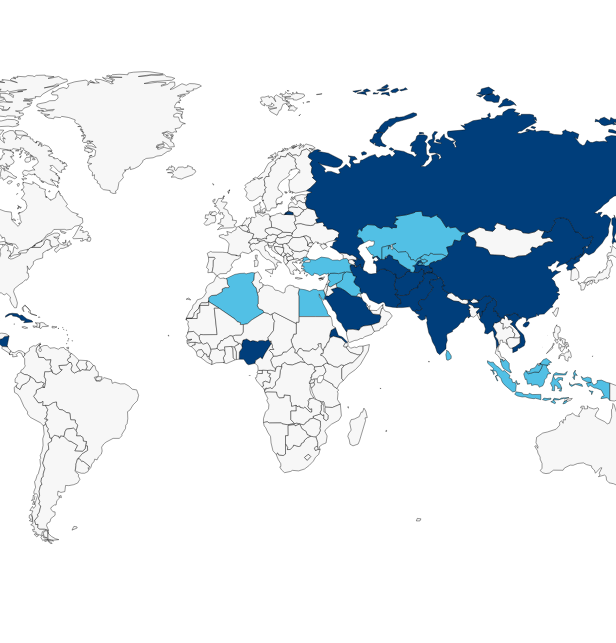When the White House announced on Sunday night that U.S. forces would be withdrawing from parts of Northeastern Syria, it became clear that the status quo, which was already growing increasingly unsustainable, was being disrupted.
Yet the White House announcement and the underlying policy have raised serious concerns that the situation is about to go from bad to worse.
It not only said that U.S. troops would vacate the area, but it also gave support for Turkey to move ahead with a planned military incursion that may seek to establish a “safe zone” that will enable the repatriation of large numbers of the three million Syrian refugees living in Turkey.
The politics and strategy around the decision are complex. As I shared on EWTN’s News Nightly on Tuesday, here are four likely implications from this decision.
1. Increased instability in the region
As the United States makes this visible change to its security presence in Northeastern Syria, it has created a vacuum that a number of groups will seek to exploit, leading to increased conflict.
The landscape in Syria is exceedingly complicated. Local state and non-state actors contribute to the challenges. Syria also has become a geopolitical battleground with significant influence from Iran and Russia, which are looking for opportunities to increase their influence across the region.
In the short term, the chaos is also creating favorable conditions for the continued reemergence of ISIS as a significant actor in Syria and parts of Iraq.
Together, these factors point to greater short and long term instability.
2. Decreased American influence
The U.S. government, including President Trump, has repeatedly called for regional and international partners to take greater responsibility in some of these conflicts. The U.S.-led Global Coalition to Defeat ISIS made great strides in the military campaign against ISIS but has not yet been able to develop durable control over these former ISIS-held areas.
For the past four years the primary local partner for the United States in Syria has been the Kurdish-led Syrian Defense Forces. The U.S.-Kurdish partnership in Syria has been one of the most troublesome issues for the United States and its relationship with NATO member Turkey, which views the Kurds as its principal threat.
For the United States seemingly to abandon the Kurds is being viewed as a historic betrayal. This policy has left the Kurds vulnerable not only to attacks from Turkey but also to increased threats from ISIS, other opposition groups, and a strengthened Syrian regime (with its Iranian and Russian backers).
Many allies in the region will likely conclude that America is less reliable as a security partner than it was before.
3. Increased risks to vulnerable religious communities
With the increased volatility in the region, the threats to religious and ethnic minorities are likely to increase.
One of the lessons from the past 8 years in Syria, or even the past 15 years in neighboring Iraq, is that instability often negatively impacts vulnerable minority communities the most.
These groups — be they Christian, Yazidi, or otherwise — often are not a priority for political and military decision makers.
Also, it is often the case in this part of Syria (and elsewhere in the region) that these minority groups physically occupy land that is disputed, and they become victims of demographic change. In the case of Syria, Turkey has proposed resettling large numbers of Syrian refugees within a “safe zone” but many of these refugees are Arabs from other parts of Syria who would be occupying towns and villages that in many cases are the traditional homelands of Christian communities.
This serves as a potent reminder that any commitment to promoting religious freedom or protecting religious minorities requires more than provision of humanitarian assistance. It also means working to support stability, security, and good governance.
4. Increased humanitarian needs
The current escalation in conflict is likely to spark yet another humanitarian crisis in a country that has seen over half its population displaced since 2011.
Depending on what shape the Turkish military campaign ultimately takes, tens of thousands, to as many as a million, civilians could be displaced.
Some might flee to other parts of Syria, but many more are likely to seek refugee in neighboring countries, including Iraq, where nearly two million displaced persons still reside.
The displacement crisis across the region is urgent. Turkey is hosting more than three million Syrians while Lebanon has more than two million. Iraq has nearly two million displaced persons, and the displaced in Jordan number more than a million. All of these countries are facing both economic and political challenges as a result of the refugee populations living within their borders. The United States and others must continue to provide meaningful solutions to these challenges as well.
Conclusion
The United States and the broader international community need to engage with the actors present in a consistent and principled manner with the aim of supporting order and stability on the ground. That means promoting security and good governance that protects the basic rights of all communities, including those religious minorities who often face the greatest risk of violence and other maltreatment. While a global coalition rallied around the fight to defeat ISIS, most European countries and UN Security Council members have failed to provide the support needed to consolidate those efforts or bring about a resolution to the conflict in Syria. Their absence intensifies the impact of every adjustment the United States makes in its policy in the region.
While endless wars are in no one’s interest, and while the absence of others persists, the United States must ensure that its policies in this region, including military withdrawal, fully account for their effects on the most vulnerable.
THE RFI BLOG

Myths of Religious Nationalism in America and Abroad

France’s Olympic Hijab Ban Violates International Law And Exacerbates Tensions

RFI Briefs USCIRF on Lessons from 25 Years of U.S. Designating Religious Freedom Violators

Thought Police: Protecting the People from Prayer

A Religious “Delaware”: Establishing a State Haven for Religious Corporations
CORNERSTONE FORUM

Challenges to Religious Freedom in Iraq and the Critical Need for Action

Public Bioethics & the Failure of Expressive Individualism

Religious Liberty in American Higher Education

Scotland’s Kate Forbes and the March of Secularism


